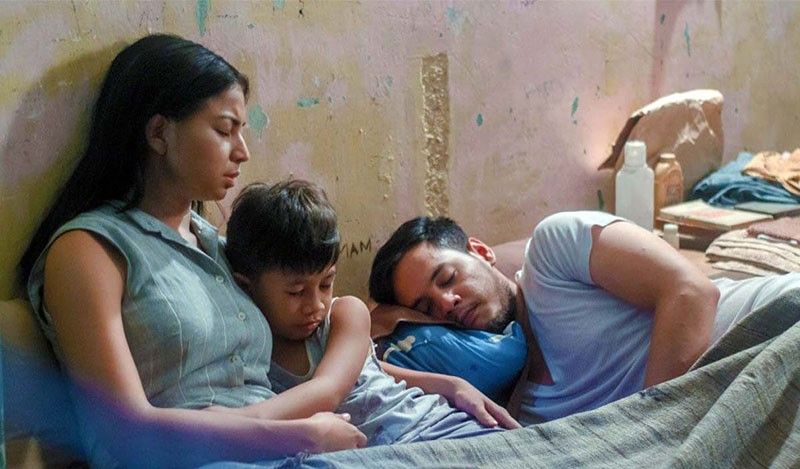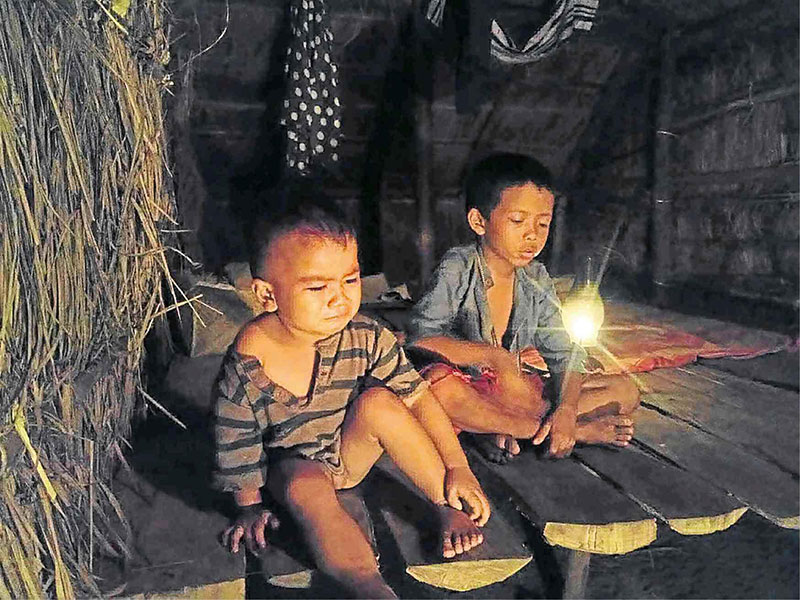Two beautiful films on sad episodes in Philippine history

This August, two film festivals are once again seeking to promote better quality Filipino films with the ongoing Cinemalaya Festival from Aug. 4 to 12 and the Pista ng Pelikulang Pilipino (“Fiesta of Filipino Films”) organized by the Film Development Council of the Philippines (FDCP) from Aug. 15 to 21.
For me, two movies shown at the festivals stand out for their attempts at artistry, their uncommon courage and effort to retell sad, controversial and violent episodes in Philippine history from the refreshing, innocent perspectives of little children.
Liway
Regardless of our partisan political leanings or whatever our views on the radical communist insurgency (this year coincidentally commemorates the 50th anniversary of its political party and the New People’s Army), the Cinemalaya entry Liway is a well-told, moving cinematic story.
Liway is set in the mid-1980s in Camp Delgado, a prison for criminals and political prisoners during martial law. Communist dissidents Day and Ric are raising their 10-year-old son Dakip (Tagalog word meaning “capture”) and baby daughter Malaya (Tagalog word meaning “free”) inside prison.
Day seeks to protect Dakip’s childhood from the harsh difficulties of their prison life, so she tells him fantastic tales about the powerful “diwata” or enchantress named Liway of Mt. Kanlaon. Dakip isn’t aware that she is really telling him her own life story of struggle.
Director and co-scriptwriter Kip Oebanda was that child in prison. His mother is Cecilia Flores-Oebanda, who used the communist rebel alias “Commander Liway.”
Among the talented cast in Liway are child actor Kenken Nuyad as Dakip “Kip” Oebanda, Glaiza de Castro as Ma. Cecilia Flores-Oebanda or Commander Liway (nicknamed “Day” in the movie since it’s a vernacular endearment meaning “lady” or “miss”); Dominic Roco as Ric or Commander Toto; Soliman Cruz as the prison warden, Sue Prado; and veteran theater actor Joel Saracho among others.

Warren Tuano and Justine Samson in Balangiga, Howling Wilderness
Balangiga: Howling Wilderness
For the Pista ng Pelikulang Pilipino, I highly recommend the award-winning Balangiga: Howling Wilderness, which won Best Film at the QCinema 2017. It was directed and co-scripted by Khavn, along with co-writers Achinette Villamor and Jerry B. Gracio. There are no celebrity stars in the cast led by Justine Samson, Pio Del Rio and Warren Tuaño.
This well-crafted movie is set in 1901 in the seaside town of Balangiga in the Philippines’ third largest island of Samar. Eight-year-old Kulas flees the town with his grandfather and their carabao to escape US General Jacob Smith’s controversial “Kill and Burn” military order. He finds an infant amid a sea of corpses and, together, the two boys struggle to survive the American military occupation.
J.P. Lawrence wrote last year in the New York Review of Books about this sad episode of Philippine history, which followed local Filipino rebels’ decisive military victory in Balangiga over US occupation troops:
“US troops returned to Balangiga in force. They bombarded the town with cannons, and set it ablaze. The three bells remained in the ruins of the church. But the retribution did not end there. General Jacob Smith told his troops he wanted a ‘howling wilderness’ and ordered any male over the age of 10 killed. ‘I want no prisoners,’ he said. ‘I wish you to kill and burn; the more you kill and burn the better it will please me.’ Theodore Roosevelt, who was responsible for the conduct of the war in the Philippines for part of 1902, had earlier reflected on the justification for such harsh tactics. ‘In a fight with savages, where the savages themselves perform deeds of hideous cruelty, a certain proportion of whites are sure to do the same thing,’ he said. In the reprisals for Balangiga, US troops are said to have killed as many as 50,000 Filipinos.”
Lawrence also wrote: “Forty-eight US soldiers died at Balangiga, America’s worst military defeat since the Battle of Little Bighorn in 1876. To commemorate their lost men — or perhaps to avenge them — American troops brought the three bells of Balangiga home with them. Over the next century, the bells passed through various military bases. Two are now in Wyoming, and one is on an army base in South Korea, displayed to memorialize the battle.”
History — whether sad, happy, tragic or triumphant — is part of our present and influences our future. These two indie movies on our history should not only entertain, but hopefully inspire us to help create a better and more just future.
* * *
Thanks for your feedback! Follow @wilsonleeflores on Instagram, Twitter, Facebook. Buy & read “Pilipino STAR Ngayon” every Friday for my column “Kuwentong Panadero” on inspiring stories.















